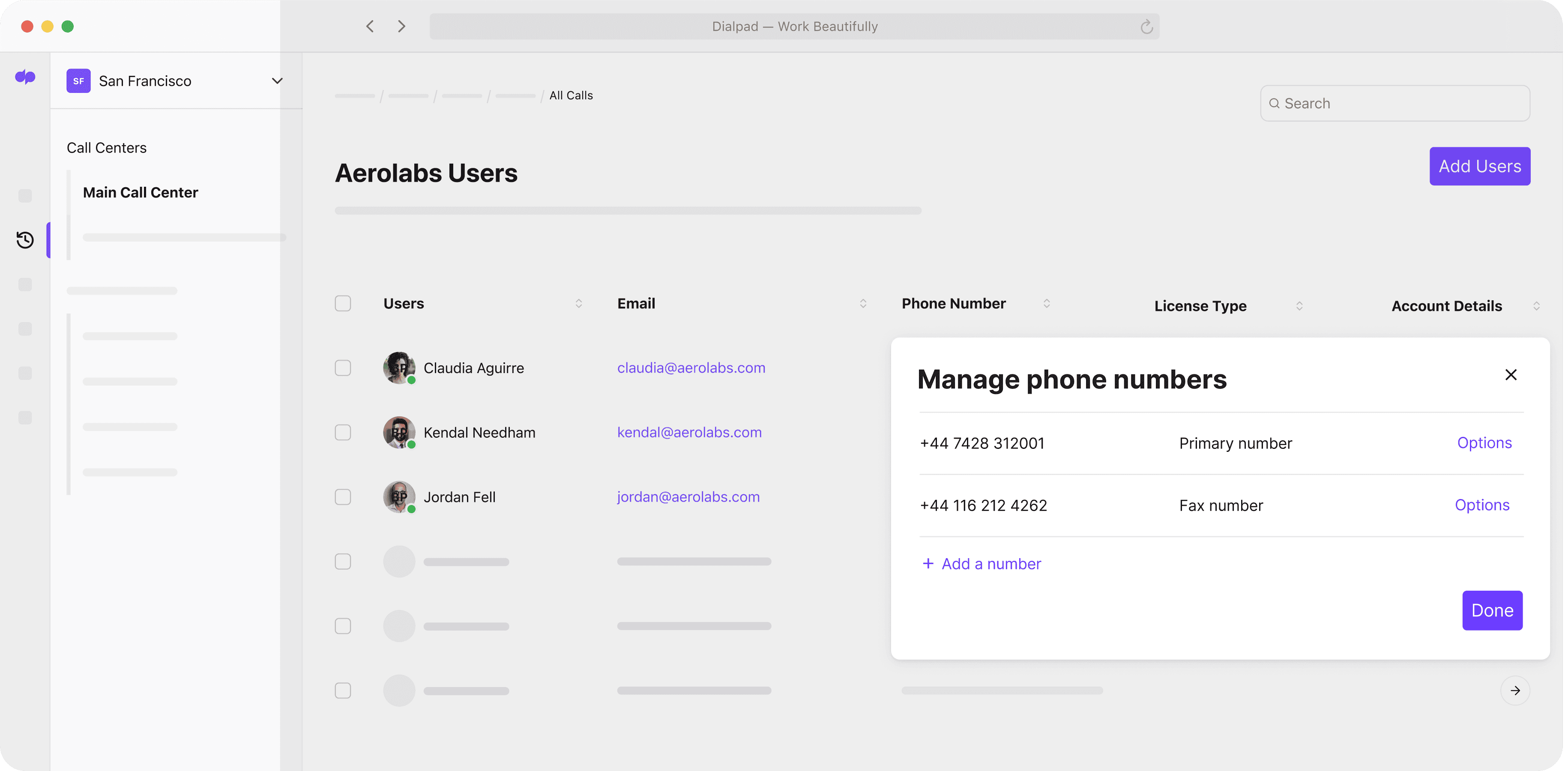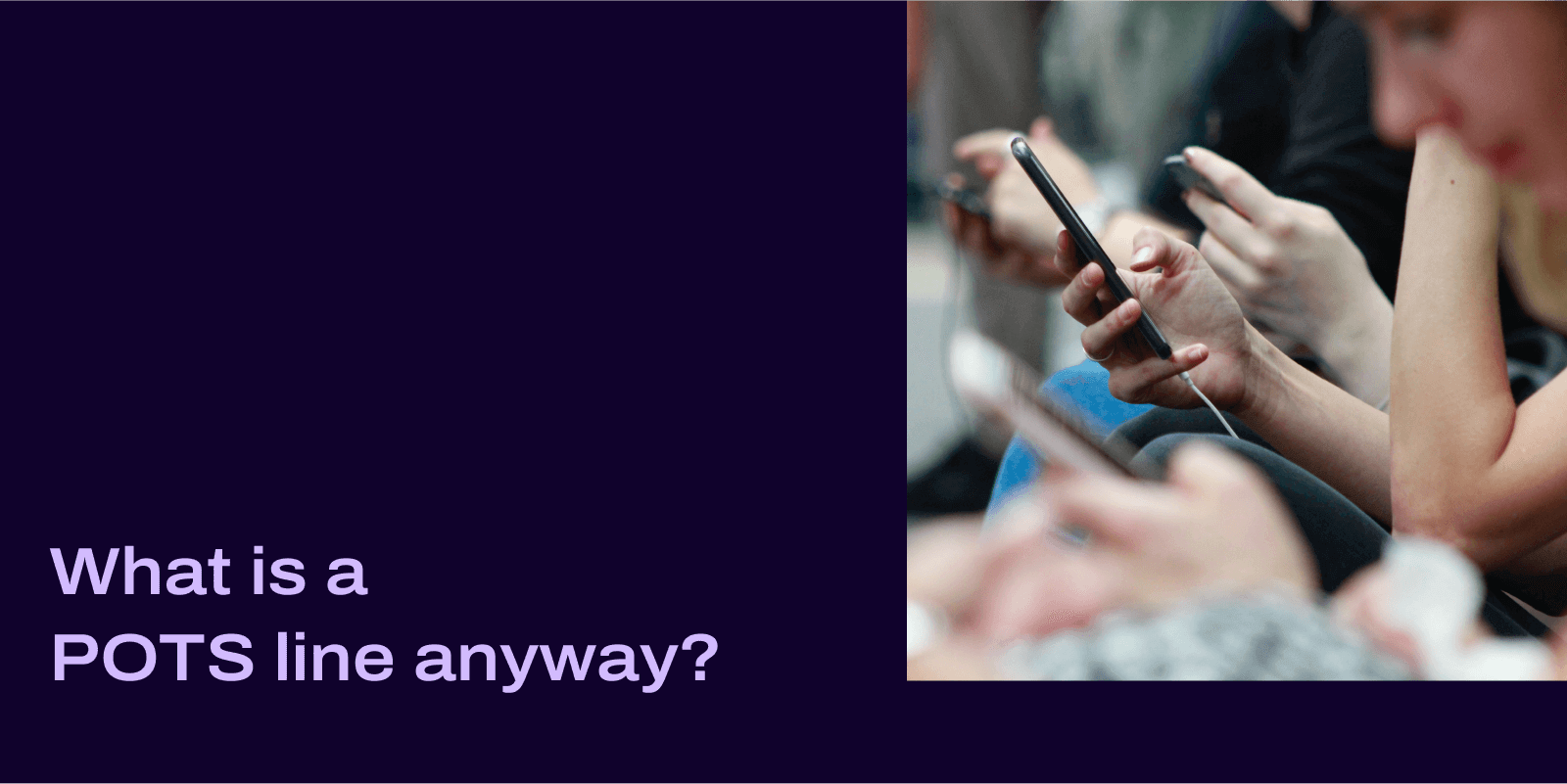Back in the good old days, POTS lines were all the rage. They were the trusted, main telephone system used for business phones and communications.
And while POTS hasn’t exactly vanished, it has been overtaken by a more modern and popular alternative to business communications: the new (and definitely improved) VoIP technology.
VoIP, otherwise known as Voice over Internet Protocol, is a form of IP telephony that has bloomed in the last decade with more and more businesses turning to cloud communications and online phone systems to solve their business needs.
Though the POTS phone may have died down in popularity, you may still hear people talk about it in relation to businesses’ phone services, like voice, fax lines, and alarm lines.
If you’re curious about how it works and what it means for your business communications choices, keep reading.
But first...
What is POTS (plain old telephone service)?
Simply put, POTS (sometimes also referred to as PSTN, or public switched telephone network) stands for plain old telephone service, and is what everyone knows as their traditional landline phone system.
It’s essentially an analog voice transmission system that’s installed with copper wires. These wires provide power and connectivity to the provider’s switching system.
Back before VoIP started booming, POTS was known as the regular phone line that everybody used.
How does a POTS line work?
Though the mechanics of POTS have been rebooted over the years, the way copper or analog lines work has largely remained the same.
Unlike the original process that involved manually switching and connecting calls, circuits are set up between two different points via the copper lines, which enables calls to connect automatically.
Here’s a more detailed step-by-step breakdown:
You dial a phone number and speak into a handset, and telephone lines convert sound waves into electrical signals, eventually directing these signals to a drop cable that’s connected to a separate terminal.
These electrical signals are then made ready for transmission to a main phone company office via an aerial cable.
Automated switches within the main office decode the electrical signals, determining their final destination.
The electrical signals are then sent off to one of two locations depending on where the call is being routed to. Some signals are routed to a tandem office while others are routed directly to a central office that’s closer to the call’s destination.
Switches within the main office decipher any incoming electrical signals, routing the call to the specified terminal.
Calls eventually reach local lines and connect to the network of whichever destination is specified.
The telephone handset translates the electrical signals into sound waves ((this is what enables us to hear the voice on the other side of the phone!)
👀 Interested in remote or hybrid work tips?
Grab the Hybrid Work Playbook, which includes real-life case studies and breaks down all things hybrid + remote, from building and sustaining a hybrid workforce to equipping your team for success.
Using POTS for business: What to know
Most businesses are slowly starting to move away from POTS in favor of VoIP phones because it’s more cost-efficient, remote-friendly, and scalable.
Actually setting up an analog phone system for a business can be costly for a few reasons. First, the price is determined not necessarily by how big your business is right now, but by how big you’re planning for it to be.
That’s because it’s generally easier to have that infrastructure set up now as opposed to adding and making adjustments later on. (You don’t have this issue with UCaaS / cloud phone systems / VoIP.)
And then you have to think about those “extra” features (that aren’t really extra because they’re usually essential) to add to an existing analog phone system like group calling, queuing, and call waiting—and all these can bump up the price even more.
And then there’s international calling (which again, is usually cheaper with VoIP)...
Basically, if your business has international aspirations (or already has internationally located teammates or customers), a traditional phone system is probably not the most cost-effective for you.
☎️ Did you know?
Not only does Dialpad’s unified communications platform allow you to unify your business communications—it gives you a phone system, messaging, video conferencing, and more—you can also significantly cut costs and set-up time. If you’re still using an analog phone system… check it out.
POTS vs. VoIP UCaaS
Though POTS is still used in some older businesses, it’s becoming more and more common for organizations to opt for IP telephony and VoIP systems.
You may also hear about UCaaS (unified communications as a service) platforms, which essentially incorporate VoIP technology into a phone system, but also include other communication channels in one app or software. (Hence “unified” communications.)
If it helps, VoIP is a technology that connects you to someone—many people think old-school PBX phones and VoIP are mutually exclusive, but they're actually not. (That's also why you see some PBX phones call themselves "cloud PBX" or "virtual PBX," which can get confusing if you think that PBX and VoIP are two completely distinct, exclusive types of phone systems.)
It might help to think of VoIP as the next evolution of POTS, and UCaaS as the next evolution of VoIP.
For now, let’s look at how POTS and VoIP compare in terms of benefits and costs. (To be honest, it’s not much of a competition.)
Connectivity: Winner = VoIP ✅
Aside from the fact that VoIP only requires a stable internet connection to set up and use, it’s also a better option for businesses that need to bring their remote or distributed teams closer together.
No copper wires or telephone lines, no hardware or server rooms. Just simple connectivity around the world, over the Internet.
(Technically you’re still susceptible to power outages, but that’d impact pretty much any phone system you’re using.)
Scalability: Winner = VoIP ✅
Another great thing about VoIP is its scalability. You can easily add users—and remove users—add new VoIP numbers, and make changes to your accounts. And often, you can do all that on your own in an admin portal online without having to call your telecom company or a technician to help you.
For example, here’s how it looks in Dialpad. You can add new users when you hire employees, manage their business phone numbers and extensions, and more:

This is a far cry from POTS, which is generally a “keep adding more” system. Once you’ve bought that hardware, you’re going to be keeping it. You can keep adding capacity, but it’s much harder (and sometimes not possible) to scale up and down as flexibly as you would with a cloud-based system.
Winner… VoIP.
Pricing: Winner = VoIP ✅
With POTS, the price isn’t just what’s on the price tag. There’s setup and installation fees, fees for adding features (like call recording), future phone lines, and more.
If you plan to expand or hire more people soon, you might just find that POTS is more than a little pricey compared to cloud-based telephony systems.
With VoIP or UCaas, you’d usually pay on a subscription basis, meaning you can cancel or downgrade anytime you’re wanting to stop operations or scale back.
The other benefit price-wise with a VoIP system is that you don’t have to worry about paying (or doing any work, really) for regular updates.
Not only do some platforms, like Dialpad, come with analytics and features like IVR and automatic call distributor built in, they also update their systems with new features quarterly—or even monthly or weekly depending on who you’re with.
Thinking of going with a POTS line? UCaaS might be a better option
Whether you’re paying your telephone company too much right now or need a more globally scalable way to manage your business communications, a unified communications solution is likely going to be the way to go.
There are just too many limits with POTS, especially for businesses that don’t want to dedicate a team of people just to manage a phone system.
If you’re considering POTS lines or a PBX phone system...
Look into VoIP or UCaaS options—it might end up being more cost-effective and just efficient in the long run. Sign up for a 14-day trial of Dialpad to see how you can make phone calls, have video meetings, and send instant messages from anywhere! It takes just a few minutes to get started and you'll be set up with a virtual number too.


